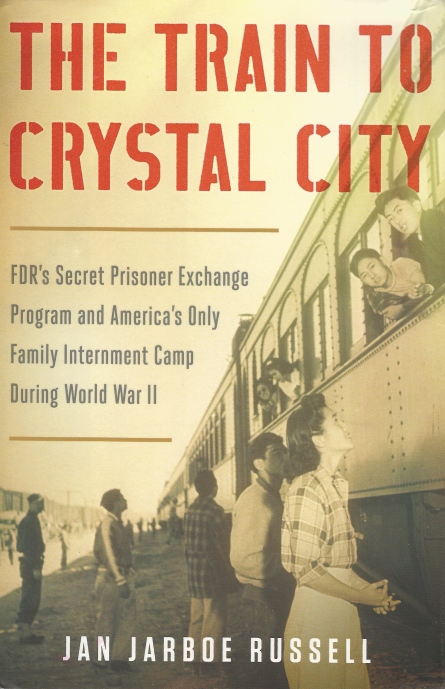
The Train to Crystal City

This book deals with an internment in Texas. This camp, unlike the major ones, was set aside for families. It also housed Japanese and Japanese Americans, Germans and Italians. Also, unlike the other camps, it was used for prisoner exchanges with other countries. A further way it was unlike the other camps was that some of the people who ended up there weren't even from the U.S. Some were from countries in South America that had agreed with the U.S. to send them there. (2264 Japanese, 4058 Germans and 288 Italians.)
A significant part of the book revolves around specific people, how they got to the camp, how they were repatriated back to Germany or Japan and what happened to them once they got there. Those who were repatriated tended to have a hard time once they got back to their native countries.
The camp opened in 1942 and did not close until after the finish of the war.
The official name of the camp was the Crystal City Enemy Detention Facility. A monument was set up in 1985 but the term used then was the Crystal City Concentration Camp.
Like the Japanese Americans who were interned these people were forced to leave their homes quickly (and some had been arrested or other wise taken previous to that), had a very limited amount of things they could bring and ended up in a camp surrounded by guard towers and barbed wire.
Some of the general background of the internment process is discussed including Hoover's role in what happened.
There's some interesting material about how Eleanor Roosevelt had some major differences in opinion from FDR in relation to the internment and other matters.
FDR authorized the Special War Problems Division to find Japanese and Germans in America and Latin America that could be rounded up and used as trade bait for American civilians and/or prisoners of war in the Pacific theater. FDR also initially wanted all 600,000 people of German descent in the country interned. He didn't care about the Italians since they were a bunch of 'opera singers.'
An act was passed on June 28, 1940 that required every alien in the U.S. to register and be fingerprinted.
The construction of Crystal City is discussed as is the different way in which the Germans and the Japanese in the camp behaved with the Germans more demonstrative in their Facism.
The proclamations 2526 and 2527 allowed any subjects of Japan, Germany or Italy who were fourteen or over to be apprehended and considered to be enemy aliens. The German American Bund is also discussed as is the types of schools that were in the camp.
The schools and how the camp got school teachers to come there is covered. There's a whole chapter on the Yes/Yes, No/No questionnaire and the problems that caused. There was a call for the camps to be closed sometime during 1943 but FDR overruled that and kept the camps open. The Quakers opposed internment.
Those people who repatriated did not know just how bad off the countries they were going to actually were.
There's a good bit about the Nazi concentration camps and what happened to the Jews. One of the most shocking bits of information is about a plan that was considered to bomb the concentration camps, hitting the crematoriums and related areas but it was abandoned since there were 'greater-priority military targets' in the area, among other reasons. There is no doubt that some of the prisoners would have been killed but at least, in my opinion, it could have delayed the death of many Jews perhaps long enough for the Allies to have liberated the camps. It would have taken time to rebuild the crematoriums.
There was a propagandistic film made about Crystal City.
There is also a lot of other information in the book. It's certainly worth getting.
Main Index
Internment Camp Index Page
Japan main page
|